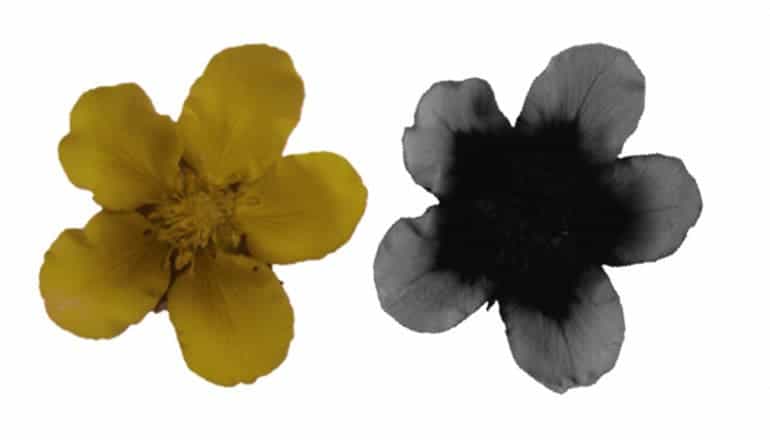In 1833, biologist Constantin Wilhelm Lambert Gloger showed that animals with warm blood that live closer to the equator tend to be darker. The finding took surprised biologists at the time and now, a new study has shown that this applies for flowers too.

Some researchers have imagined that flowers might follow this rule, but there was a technological barrier in the way of pursuing that theory: if plants would in fact become darker, they would become darker for the pollinators – and pollinators like bees see flowers much differently than we do. It would only be logical for the plants to get darker the way their pollinators see them, not the way we see them.
For this study, scientists analyzed the flowers of Argentina anserina, a plant in the rose family, across four lines of latitude—three in the Northern and one in the Southern Hemisphere. They especially analyzed the plant’s “bull’s-eye” center, which is dark and found that the dark area got larger the closer to the equator the flowers. This is likely the case because larger “bull’s eye” are associated with higher levels of ultraviolet light, which of course, is more intense close to the equator.
It’s not yet clear why this happens, but researchers believe it is because the dark patch absorbs much more ultraviolet light, which can otherwise have harmful effects towards the plant’s DNA. In the study, they confirmed that high levels of ultraviolet light can damage the plant’s pollen (gametes).
Aside from being really interesting, this study also indicates some potential problems. As the ozone layer becomes thinner or depleted in some parts of the world, more and more ultraviolet light gets through and the dark spot will grow more and more. But the thing is, the dark spot obscures the “sweet center” of the flower where pollen and nectar rewards are found, thus making poorer targets for pollinators.
“Spring is coming earlier, and plants and pollinators are no longer in sync,” Ashman says. “Increased ultraviolet radiation is causing the same sort of disruption.”


